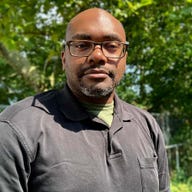International Day of Persons With Disabilities: What it is and why it matters

Established by the United Nations in 1992, the goal of the International Day of Persons With Disabilities is to promote the rights and well-being of persons with disabilities in all aspects of society.
In 2021, the International Day of Persons with Disabilities is observed on December 3.
The United Nations Educational, Scientific and Cultural Organization (UNESCO) is amplifying the observance with a week-long program from November 25 through December 3. The program's theme and focus include building a "sustainable post-COVID-19 world by and for persons with disabilities."
To raise the campaign's visibility, UNESCO is using its social media platforms to highlight the stories of people living with disabilities through the coronavirus pandemic.
Why does accessibility matter in cyber and IT?
The pandemic has exacerbated inequities in healthcare, education, employment, and community participation for people with disabilities.
According to the UN, more than 1 billion people globally have some type of disability. This includes nearly 61 million US adults, according to the Centers for Disease Control. That means about 26% of Americans may experience differences in how they manage daily tasks and requirements.
Cyber and IT-oriented companies often play key roles in developing assistive technologies. These technologies are any product or system that maintains, increases, or improves the functional capability of people with disabilities.
Assistive technologies are a broad category and include:
- Computer hardware, like specialized switches, keyboards, or pointing devices.
- Software, like screen readers or eye and head trackers.
- Specialized learning materials.
Cybersecurity or IT professionals may be called on to develop or train people on using assistive technology.
How to be good teammates for people with disabilities
Language is an important starting point for being a great person to work with when it comes to accessibility and inclusiveness. Everyone knows that words have the power to hurt or to heal, to lift up or to put down.
Beyond using inclusive, affirming language, here are some suggestions to improve workplace accessibility:
Make friends first
Many people with disabilities don't consider their disability or disabilities a defining characteristic of their life. If they don't, take appropriate opportunities to ask about their family or their interests in music, TV, sports, food, and hobbies. If they do, be prepared to ask about and receive their stories about their life without questioning their choices or offering unsolicited advice or sympathy. When trying to connect with a person with disabilities, look for some of these pieces of shared humanity.
Train everyone
Employers should educate managers and teammates about the rights of people with disabilities in the workplace. This includes possibly invisible disabilities, and everyone's role and opportunity to improve workplace accessibility. It may help to find trainings that reframe or clarify disability and ability as attributes that are defined differently from situation to situation, that acknowledge that disability can fluctuate over time, and that recognize the disability community is not monolithic — even within the communities, people disagree on definitions, appropriate terms, and the advocacy and support needed. Consider being responsive to the people in your organization rather than only generalizing from outsider perspectives.
Eliminate physical barriers
Although work from home is part of the new normal, some organizations are urging or mandating that people come back to the office in some capacity. As people return, take time to make sure people with disabilities can easily navigate in every space, from the parking lot to the restroom to the boardroom.
This may include making accommodations that involve more than accessible doorways and ramps. For example, some organizations may find it important to manage environmental stimuli like the presence of fragrances and other indoor air quality factors, the audio environment, and access to adjustable light levels. Doing so can improve employee health across many categories of disability, including for employees who may have undiagnosed or undisclosed allergies or mental health, or neurological or sensory processing disorders and conditions.
Maintain flexibility
As one source points out, in some instances, "no matter how accessible your workplace is, it won't be enough for people with severe mobility impairments." If you're in that situation, consider inviting the employee or employees in question to help design accommodations that work for the whole team, such as exploring whether they could work in a totally remote role. Part of this flexibility can also include learning a person's preferred way to communicate. Some people with disabilities may find email or Slack chats easier; others may prefer video calls.
Enhance digital accessibility
Offer closed-captioned video calls, email summaries of key points from meetings, and make sure employees can access visual information (using large enough type in colors and background combinations with adequate contrast, for example). Encouraging people to follow up through whatever communication mediums work best for them. That way, people who process information differently are less likely to feel excluded.
This article was reviewed by Angelique Geehan

Angelique Geehan works to support and repair the connections people have with themselves and their families, communities, and cultural practices. A queer, Asian, gender-nonconforming parent, Geehan founded Interchange, a consulting group that offers anti-oppression support. She organizes as part of several groups, including the National Perinatal Association's Health Equity Workgroup, the Health and Healing Justice Committee of the National Queer and Trans Asian and Pacific Islander Alliance, QTPOC+ Family Circle, and Batalá Houston.
Angelique Geehan is a paid member of the Red Ventures Education freelance review network.